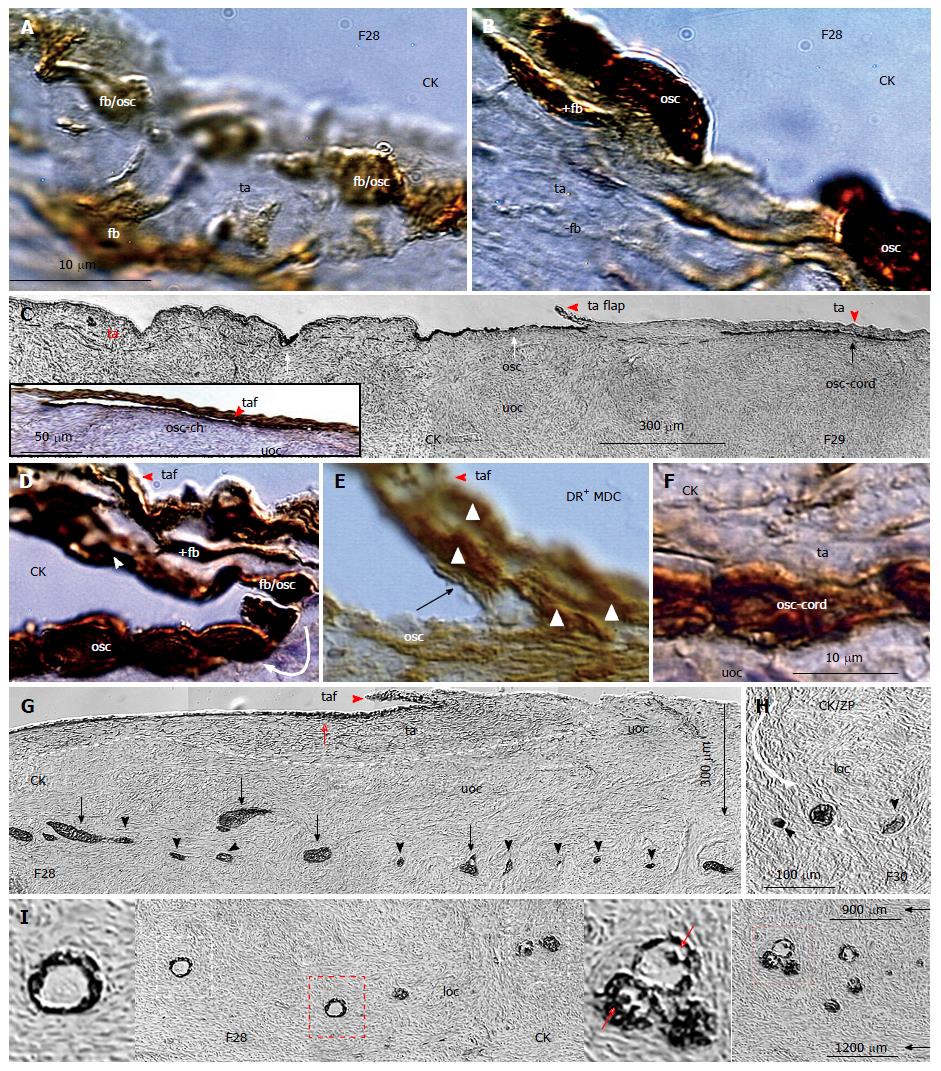Copyright
©The Author(s) 2016.
World J Stem Cells. Dec 26, 2016; 8(12): 399-427
Published online Dec 26, 2016. doi: 10.4252/wjsc.v8.i12.399
Published online Dec 26, 2016. doi: 10.4252/wjsc.v8.i12.399
Figure 11 Origin of ovarian stem cells and formation of granulosa cell nests migrating to the lower ovarian cortex in midfollicular ovaries.
A: The CK+ fibroblast-shape cells (fb) in tunica albuginea develop into ovarian stem cells (OSC) precursors (fb/osc) to form new OSC cells (B); C: Certain segments of ovarian surface are covered by OSCs (white arrows) to form by extensions the tunica albuginea flaps, the OSC channels (inset), and OSC cords (black arrow). The flaps originate from CK+ fibroblasts, and are covered by CK+ OSC precursors (fb/osc) (D), contain DR+ (activated) MDCs (E), and form bilaminar OSC cords (F); G: The CK+ OSC-derived clusters (arrows) of granulosa cells undergo fragmentation into granulosa cell nests (arrowheads), which are transferred by stromal rearrangements to the lover ovarian cortex (H) to form new primary follicles (white arrowhead); I: New primary follicles contain CK+ primary Balbiani bodies (right inset), which are consumed, and absent in the resting follicles (left inset)[43]. The panels A, B, G and I are from the identical ovary of 28-year-old women presented in the Figure 10. MDC: Monocyte-derived cell.
- Citation: Bukovsky A. Involvement of blood mononuclear cells in the infertility, age-associated diseases and cancer treatment. World J Stem Cells 2016; 8(12): 399-427
- URL: https://www.wjgnet.com/1948-0210/full/v8/i12/399.htm
- DOI: https://dx.doi.org/10.4252/wjsc.v8.i12.399









